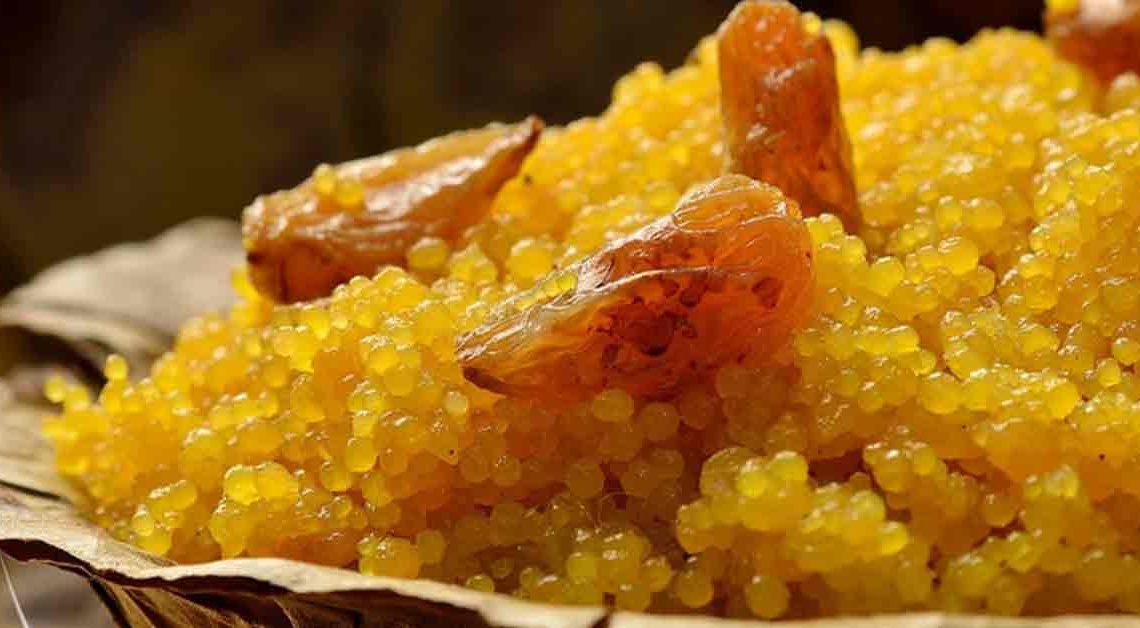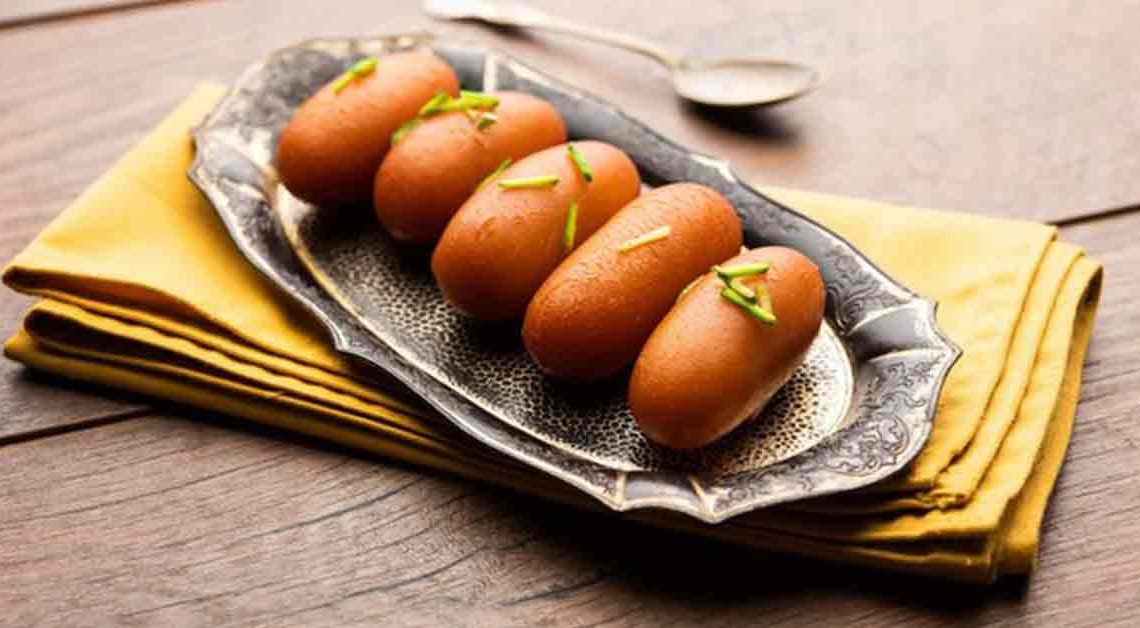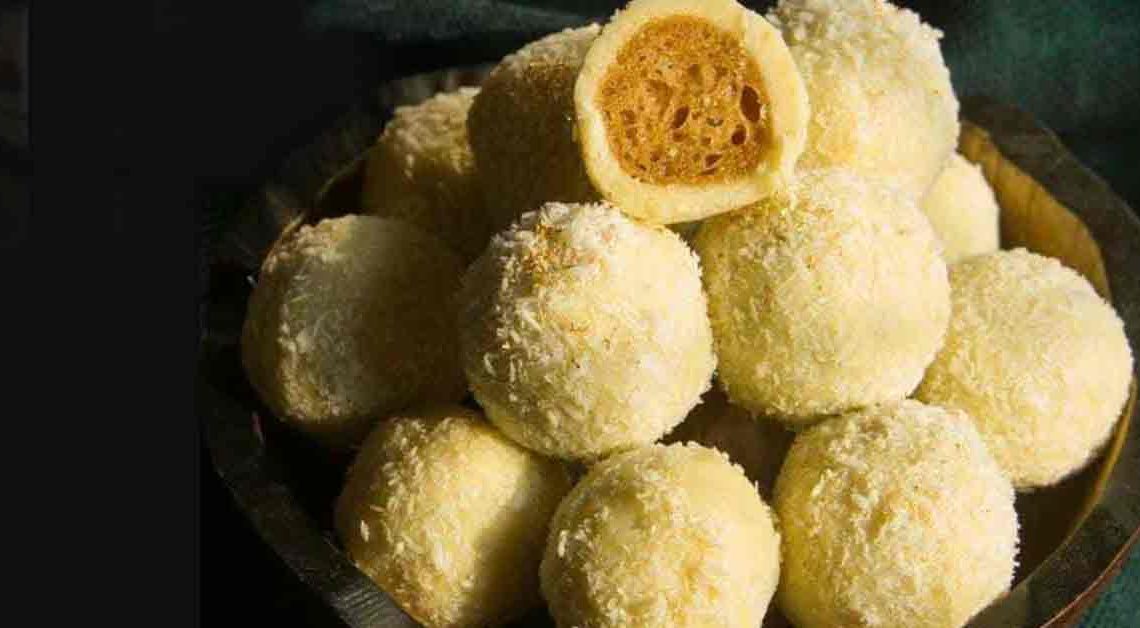Bite-sized Bliss: The World of Mihidana

Tucked away in the heart of West Bengal, India, lies a culinary gem that captures the essence of tradition and sweetness like no other – Mihidana on our Mithainama. This tiny, golden sweet is more than just a dessert; it’s a story of heritage, craftsmanship, and a tantalizing burst of flavor in every bite.
Mihidana’s history dates back centuries, with its origins rooted in the kitchens of the royal courts of Bengal. Made from gram flour and sugar syrup, this sweet delicacy is known for its unique texture, which resembles fine vermicelli. The name “Mihidana” itself evokes a sense of mystery, with some believing it to be derived from the words “mihi” and “dana”.
What sets Mihidana apart is not just its taste but also the intricate process of making it. Skilled artisans meticulously shape the gram flour batter into tiny, thread-like strands before frying them to perfection. The golden strands are then soaked in sugar syrup, infusing them with a delightful sweetness that lingers on the palate.
Join us on a culinary journey as we unravel the secrets of Mihidana – a sweet so divine, it’s sure to captivate your taste buds and leave you craving for more.
Origin of Mihidana
Mihidana, a delicate and delicious sweet from the state of West Bengal in India, has a fascinating origin story deeply intertwined with the region’s rich culinary history.
Legend has it that Mihidana was created in the kitchens of the royal courts of Bardhaman in West Bengal. The sweet was reportedly invented by the royal chefs as a solution to a problem faced by the king – he wanted a sweet that would melt in the mouth instantly.
To achieve this, the chefs came up with the idea of making tiny, grain-like sweets from gram flour that would dissolve quickly, hence the name “Mihidana,” which is derived from the Bengali words “mihika” and “dana”.
Over time, Mihidana became a popular sweet across Bengal and is now enjoyed not only in the region but also in other parts of India. The making of Mihidana involves a meticulous process of frying gram flour batter into fine, thread-like strands, which are then soaked in sugar syrup to give them their characteristic sweetness.
History of Mihidana
The history of Mihidana is deeply rooted in the cultural and culinary heritage of Bengal, India. This delectable sweet has a fascinating past that reflects the region’s rich tradition of culinary excellence.
Mihidana is believed to have originated in the city of Burdwan in West Bengal. It is said to have been created in the royal kitchens of the Burdwan Raj family during the 19th century. The story goes that the royal chefs were tasked with creating a sweet that would melt in the mouth instantly, and thus, Mihidana was born.
Mihidana quickly gained popularity and became a favorite among the people of Bengal. It is often enjoyed during festivals and special occasions, and its unique texture and flavor have made it a beloved sweet not just in Bengal but across India.
Today, Mihidana continues to be made using traditional methods, passed down through generations, making it not just a sweet treat but also a symbol of Bengal’s rich culinary heritage.
Cultural Significance
Mihidana holds a special place in the cultural fabric of Bengal, India, representing more than just a sweet treat. Its cultural significance is deeply rooted in the region’s traditions, festivals, and culinary heritage.
Festivals: Mihidana is a popular sweet during festivals like Durga Puja, Diwali, and Holi in Bengal. It is often offered to deities as prasad and shared with family and friends during these celebrations, symbolizing joy, togetherness, and auspiciousness.
Culinary Tradition: The making of Mihidana requires skill and precision, reflecting the culinary expertise passed down through generations in Bengal. The traditional method of preparing Mihidana involves intricate techniques that have been preserved and cherished over time.
Regional Identity: Mihidana is closely associated with the city of Burdwan, where it is believed to have originated. It has become a symbol of the region’s culinary identity, showcasing the unique flavors and techniques of Bengali cuisine.
Where is Mihidana Famous?
Mihidana is particularly famous in the state of West Bengal, India, where it originated. It is a popular sweet in the region and is enjoyed by people of all ages. In West Bengal, Mihidana is not only a sweet treat but also a cultural symbol, often associated with festivals, weddings, and other celebrations.
While Mihidana is most commonly associated with Bengal, it is also enjoyed in other parts of India, especially in states with a significant Bengali population. In cities like Kolkata, Delhi, and Mumbai, you can find Mihidana being sold in sweet shops and enjoyed by locals and visitors alike.
Outside of India, Mihidana may not be as well-known, but it has gained some recognition among those who are familiar with Indian cuisine and sweets. It is often featured in articles and blogs about Bengali cuisine, showcasing its unique texture and flavor profile.
Overall, Mihidana’s fame extends beyond its place of origin, reaching people who appreciate its delicate sweetness and cultural significance.
Interesting Facts and Trivia
Here are some interesting facts and trivia related to Mihidana:
- The sweet is said to have been created in the royal kitchens of the Burdwan Raj family in West Bengal during the 19th century. It was reportedly invented to fulfill a royal decree for a sweet that would melt in the mouth instantly.
- The sweet is known for its unique texture, which is light, airy, and melts in the mouth. It has a delicate sweetness that is not overpowering, making it a favorite among those with a sweet tooth.
- While the traditional Mihidana is made with gram flour and sugar syrup, there are variations of this sweet that include added ingredients such as saffron, cardamom, and nuts to enhance the flavor.
- The sweet has become a symbol of Bengal’s culinary heritage, showcasing the region’s rich tradition of sweets and desserts.
- In Bengal, Mihidana is not just a sweet treat but also a cultural symbol, often associated with joy, togetherness, and auspiciousness.
Did You Know?
Did you know that Mihidana, besides being a delightful sweet treat, offers some surprising health benefits?
- The sweet is made from gram flour, which is rich in protein. This makes Mihidana a good source of plant-based protein, essential for muscle building and repair.
- Since Mihidana is made from gram flour and does not contain any wheat or gluten-containing ingredients, it is a great gluten-free option for those with celiac disease or gluten sensitivity.
- Gram flour, the main ingredient in Mihidana, is high in dietary fiber. Fiber helps improve digestion, promotes a feeling of fullness, and supports overall gut health.
- The sweet contains minerals like iron, magnesium, and phosphorus, which are essential for various bodily functions, including energy production, bone health, and muscle function.
- Despite being a sweet, it has a low glycemic index, which means it does not cause a rapid spike in blood sugar levels. This makes it a suitable option for those looking to manage their blood sugar levels.







